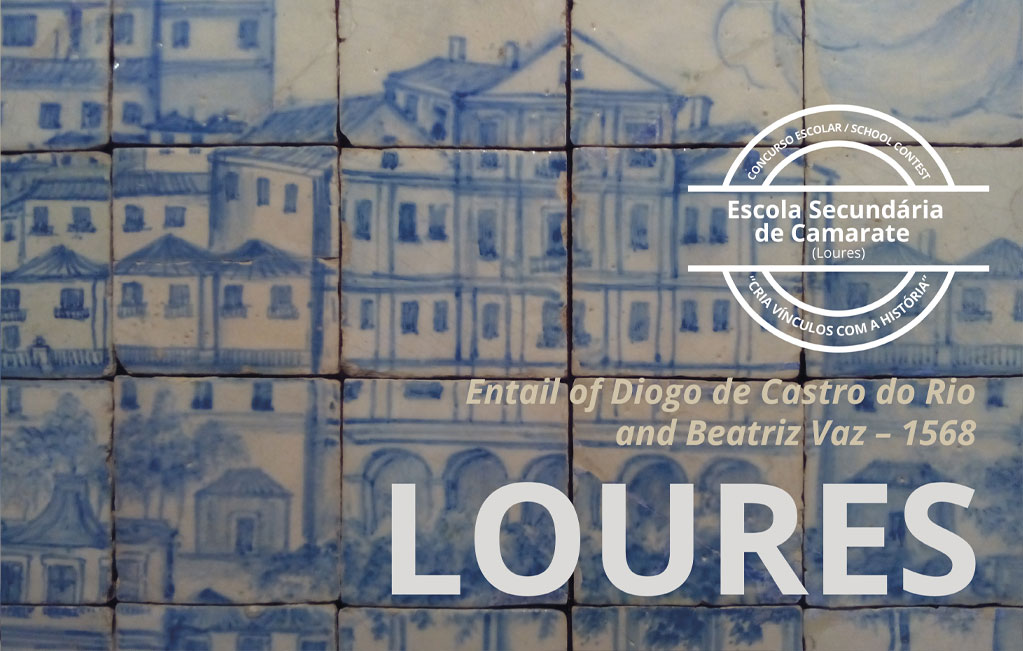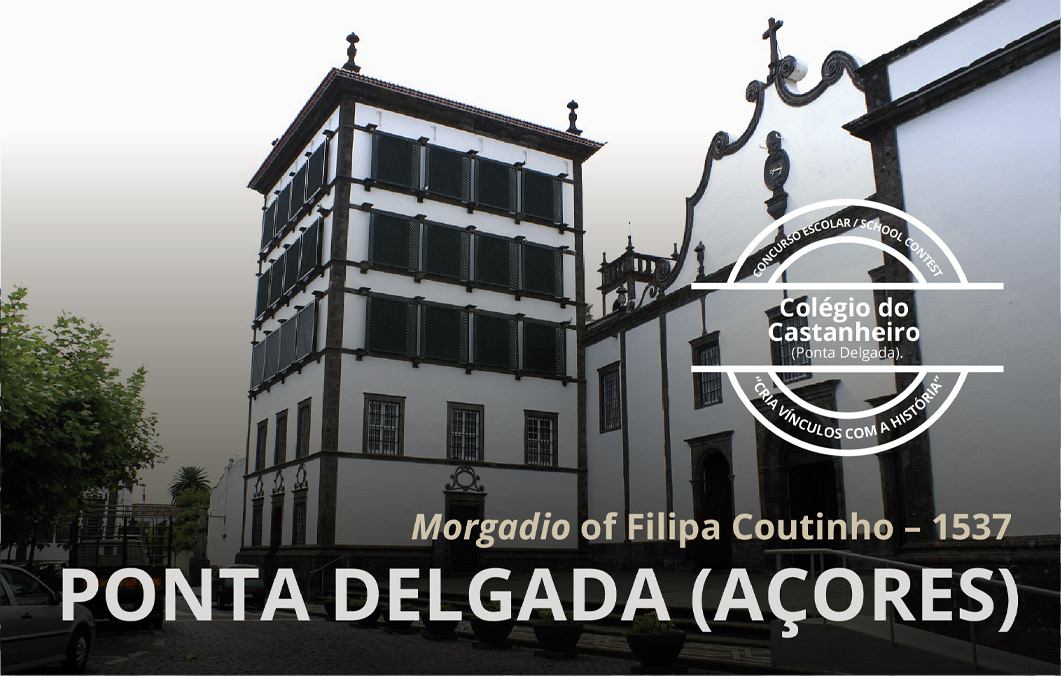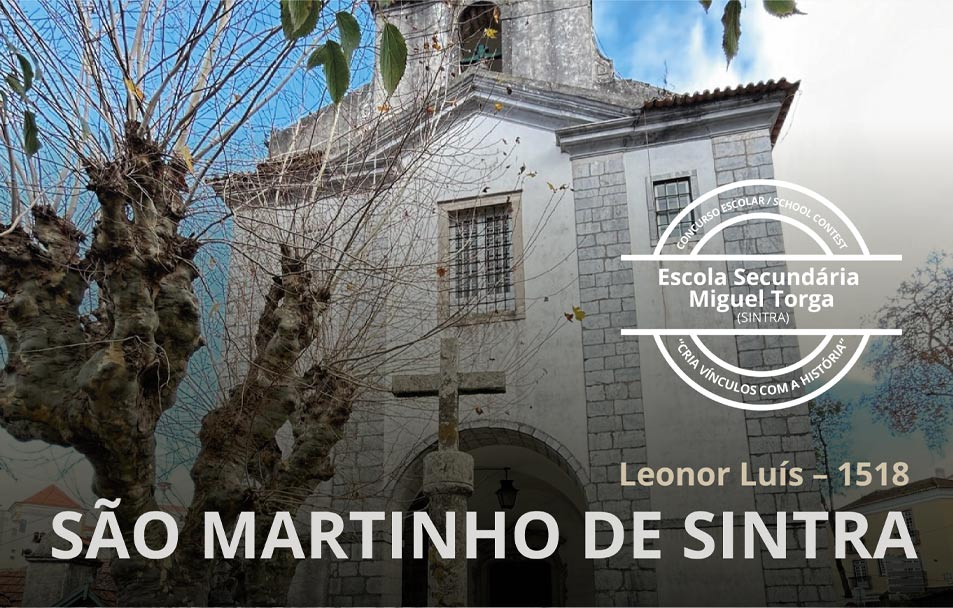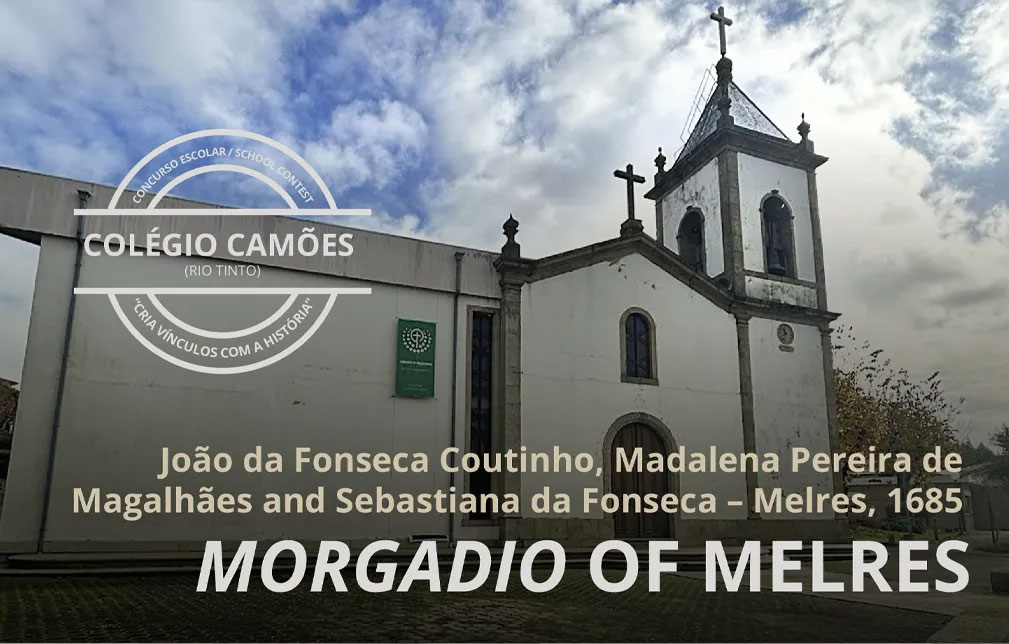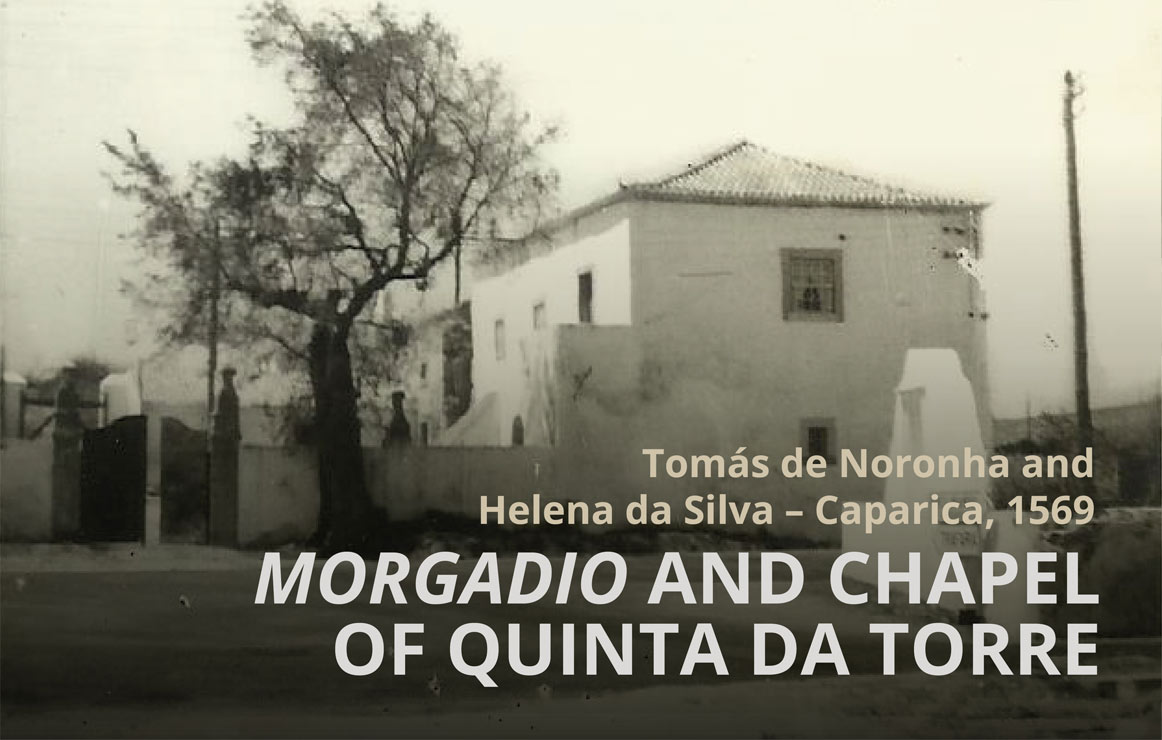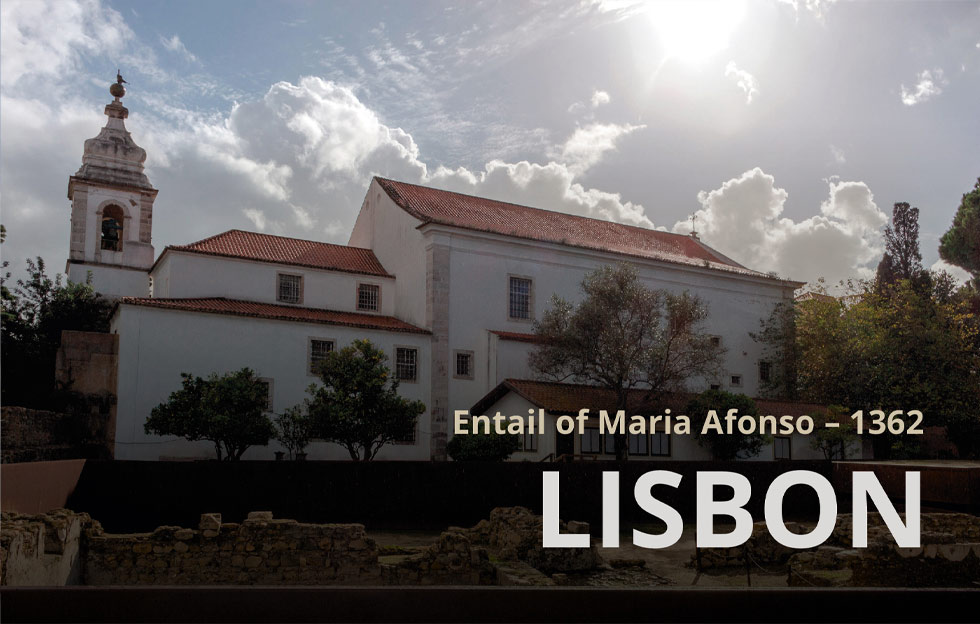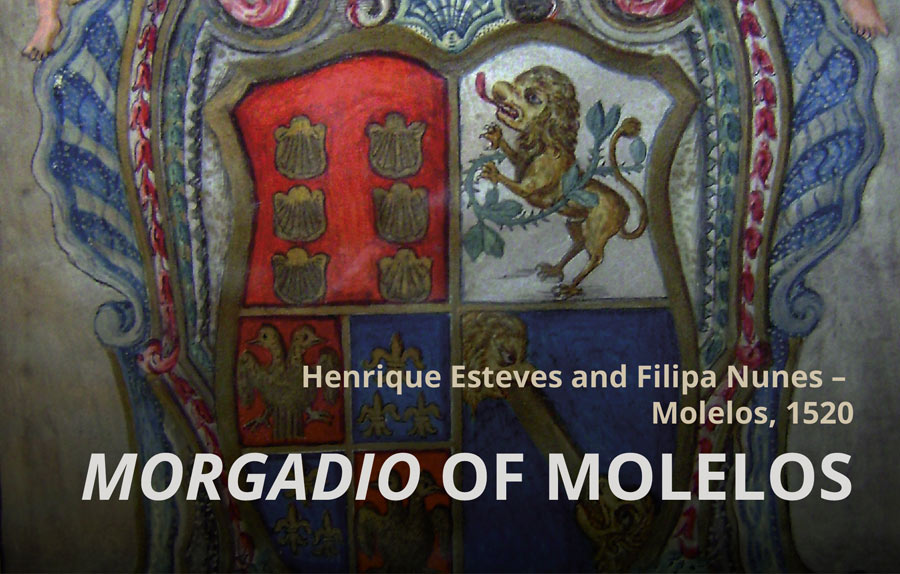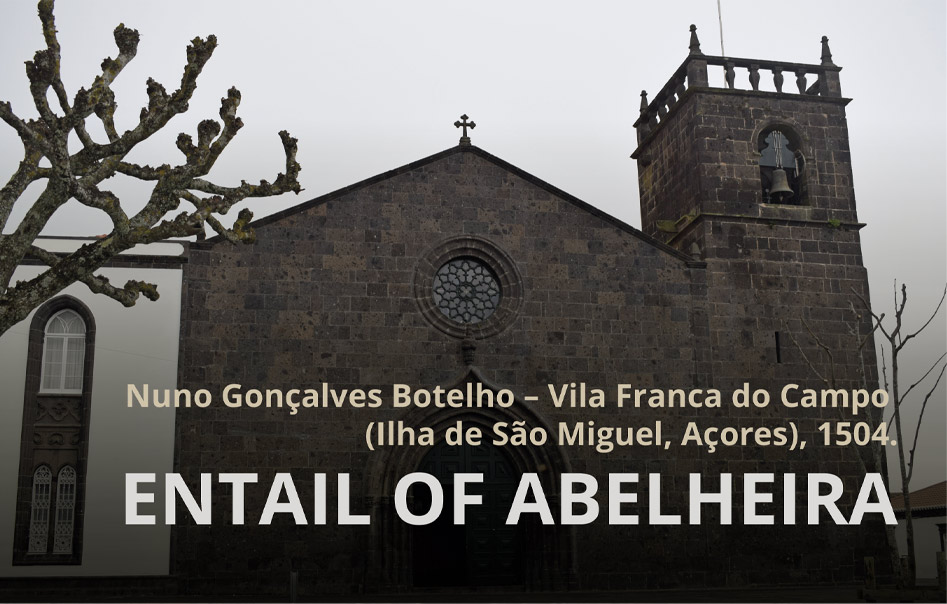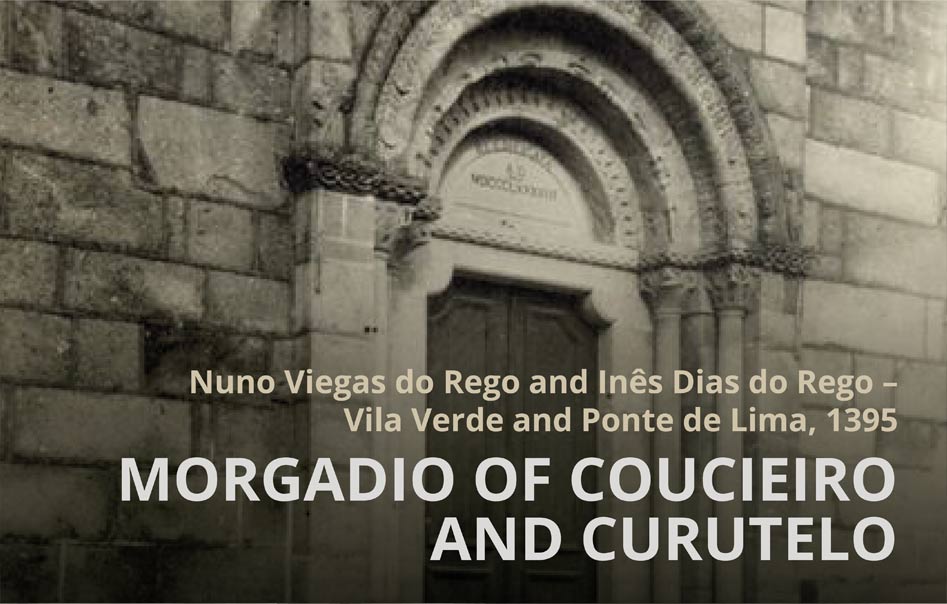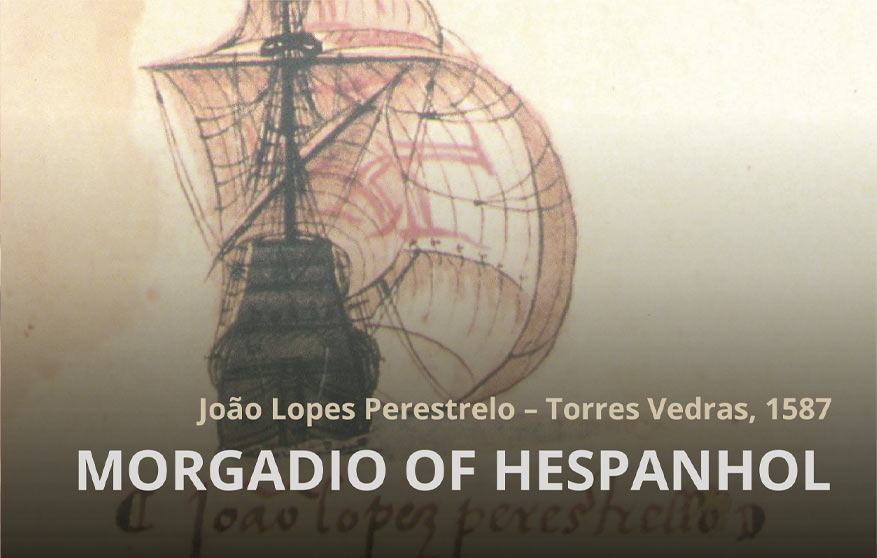Entail of the month (April, 2024)
Entail of Diogo de Castro do Rio and Beatriz Vaz
Loures (1568)
Diogo de Castro do Rio was a fidalgo and a notable businessman, a member of a very important group in 16th century Portugal. He added the surname “do Rio” to his name after being nobilitated, according to a letter dated 6 May 1561, taking the name of the Quinta do Rio that he and his wife owned in Sacavém, by the Trancão river (OLIVAL, 2002: 7-8, 20-21). He was married to D. Beatriz Vaz and had several children, including the heir, Martim de Castro do Rio, a poet of great renown (CUNHA, 2011).
Diogo de Castro do Rio was the brother of Luís de Castro do Rio, also a merchant and nobleman, who also founded another entail. Luís was also the patron of the Franciscan convent of Santo António dos Cavaleiros (Quinta do Conventinho, where the Loures Municipal Museum is today). It was built in 1575, and Luís was buried in the chancel. The two brothers were new-christians and very active merchants in the overseas trade (website cm-loures.pt).
[Fig. 1] Sacavém Roman bridge over the river Trancão (“Lembrança Pera Redificar a Ponte de Sacauem.”, in Da Fábrica que Falece à Cidade de Lisboa, Francisco de Holanda, third quarter of the 16th century). © Creative Commons.
On 19 May 1568, Diogo de Castro do Rio and his wife, D. Beatriz Vaz, founded a morgadio for their eldest son, Martim de Castro do Rio (ANTT, Governo Civil de Lisboa, Registo Vincular, liv. 98, fls. 143v-157). This entail included the houses where they lived, in Rua dos Cabides, their houses in Fangas da Farinha and Quinta do Rio, which was the head of the estate. According to the document, after the death of both founders, Martim de Castro do Rio inherited these assets, which were afterwards to be succeeded by the eldest son of the firstborn, grandchildren and great-grandchildren, or other legitimate male children. If there was no male heir, the inheritance would pass to the uncle or another male descendant. If the heir, Martim de Castro do Rio’s eldest son, had only one female daughter, with no grandchildren, great-grandchildren or other male descendant, the inheritance would pass to a male lateral line. Female succession had exceptions, such as a woman who had taken a vow of chastity. The relative who inherited the estate in her place would, in this case, be obliged to give part of the annual income to support her in religious life.
The heir to the morgadio’s property was obliged to repair any damage to the property with his own resources, without harming future successors. The heir should always use the surname “do Rio” and his arms on the right-hand side.
[Fig. 2] Representation of the convent of São Francisco de Lisboa, in Grande Panorama de Lisboa, Gabriel del Barco (attrib.), 18th century (detail of tile panel). © Creative Commons.
In establishing the entail, Diogo de Castro do Rio and Beatriz Vaz also foresaw other possible problems in the succession. Thus, if male twins were born and it was not known which one was born first, the father had to choose one of them as heir when they reached the age of twenty. The son the father chose was considered the eldest and inherited the estate, as did his descendants. If the father died without having chosen a son, the choice fell to the mother or, if she was already deceased, to the eldest uncle from his father’s family. If the heir was born with a disability (“unfit and incapable”), and there was no way for him to hold an office or trade, and he died before administering and succeeding to the administration of the morgadio, he would be succeed by the next in line. If he survived until he was married and had children or hope of having them, he would hold the entail until his death, and the property would go to his son as a fair succession. If he had no succession (or it was clear that he couldn’t have one), he would lose the administration, which would go to the next in line, but he would keep his reserved house and the fourth part of the fruits.
In 1573, Diogo de Castro do Rio and Beatriz Vaz made a contract with the friars of the convent of São Francisco de Lisboa to establish a chapel in the convent, where they wanted to be buried, as well as their descendants (ANTT, Convento de São Francisco de Lisboa, Mç. 6, unnumbered document). This chapel was to be administered by the morgadio’s successors and decorated with his coat of arms. Diogo and Beatriz indicated that their tombs should be inside the chapel, reserved forever for their descendants. They wanted to rest in peace in a special place, together with their descendants, as a way of honouring and preserving their memory.
This Entail of the Month was created in the context of the Cria Vínculos com a História competition.
School: Escola Secundária de Camarate (Loures)
Class: 11.º A
Teacher: Albertina Ramos
Studentes: Afonso Ferreira, Ana Silva, Andreia Carvalho, Arlene Souza, Desejada Adore Te, Iara Alves, Letícia Gomes, Letícia Ribeiro, Margarida Calvo, Martim Fonseca, Nelson Veiga, Paulo Pontes, Joelma Santos.
Coordination: Maria de Lurdes Rosa, Teresa Oliveira, Leonor Dias Garcia.
Sources and bibliography
ANTT, Convento de São Francisco de Lisboa, Mç. 6, unnumbered document.
ANTT, Governo Civil de Lisboa, Registo Vincular, liv. 98, fls. 143v-157.
OLIVAL, Fernanda – Juristas e mercadores à conquista das honras: quatro processos de nobilitação quinhentista. Revista de História Económica e Social. Lisboa. N.º 4, 2.ª Série (2.º semestre de 2002), pp. 7-53. [15/02/2024] Available at http://hdl.handle.net/10174/2364
CUNHA, Mafalda Ferin – A poesia de Martim de Castro do Rio (c. 1548-1613). 1.ª Edição. Coimbra: Imprensa da Universidade de Coimbra, 2011.
Website Câmara Municipal de Loures – Luís de Castro Rio. Arqueologia em Calendário, Loures: Câmara Municipal de Loures. 1 de junho de 2017. [15/02/2024] Available at https://www.cm-loures.pt/media/pdf/PDF20170622155624452.pdf
Other entails of the month



